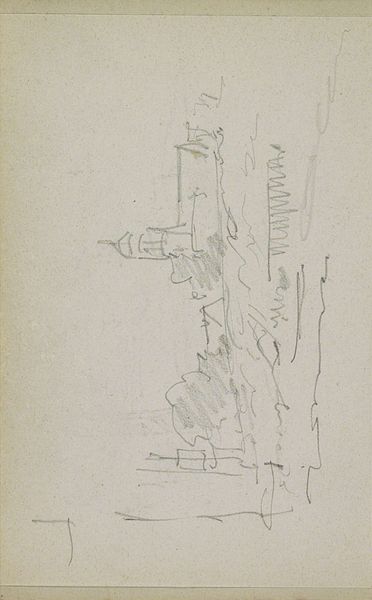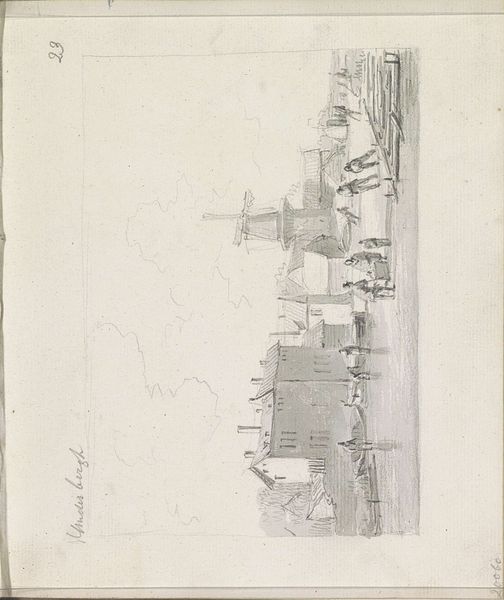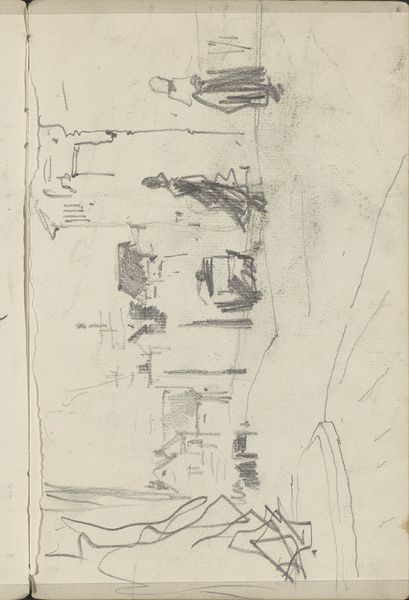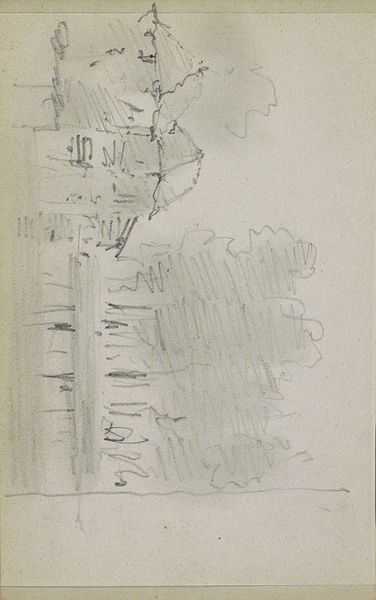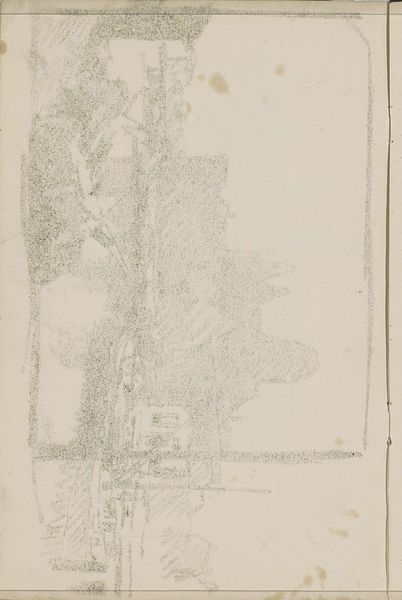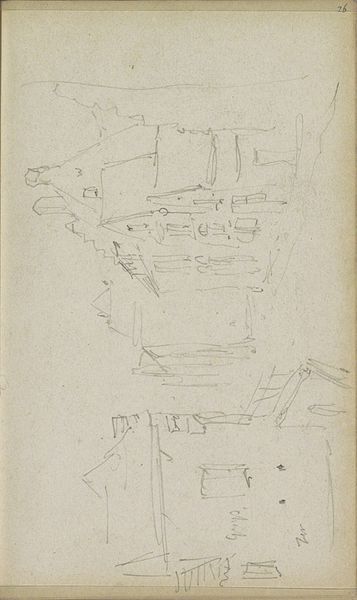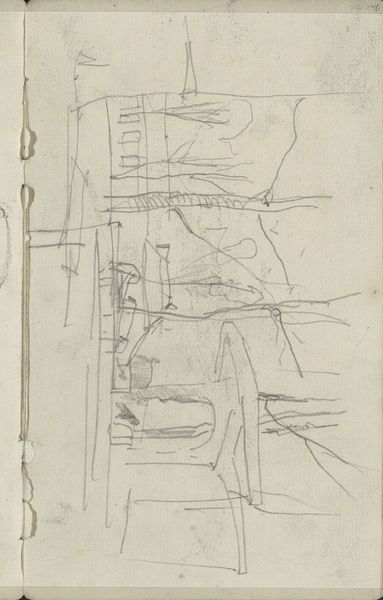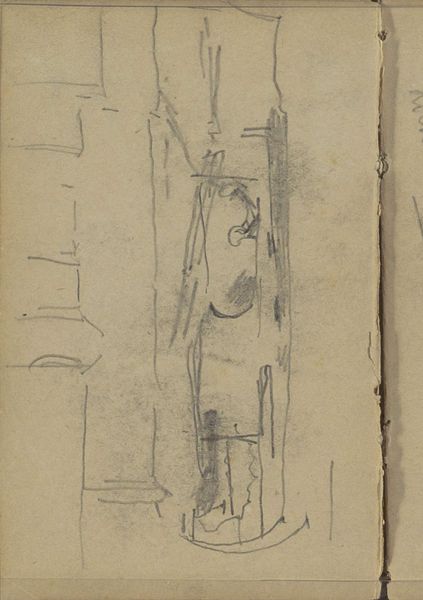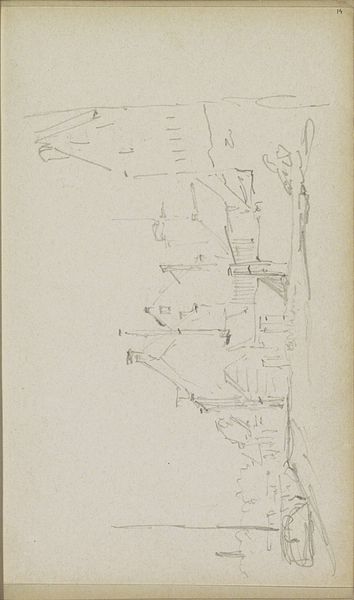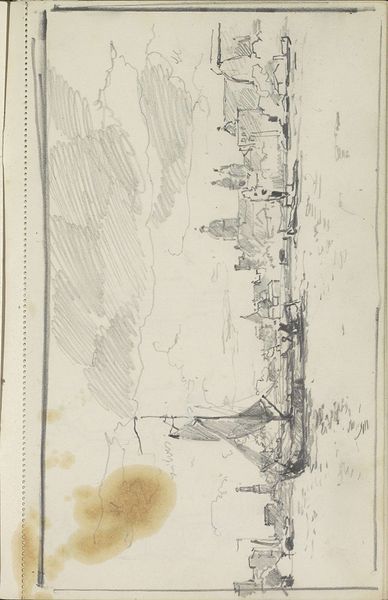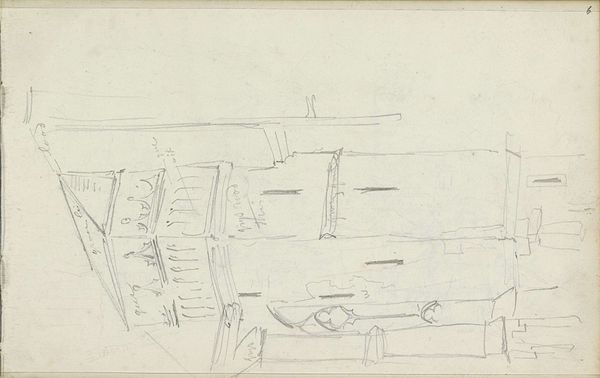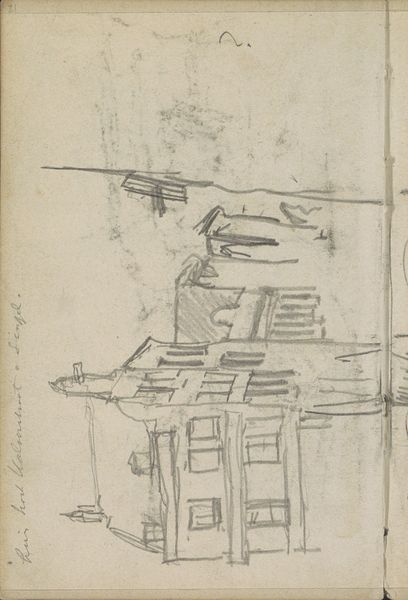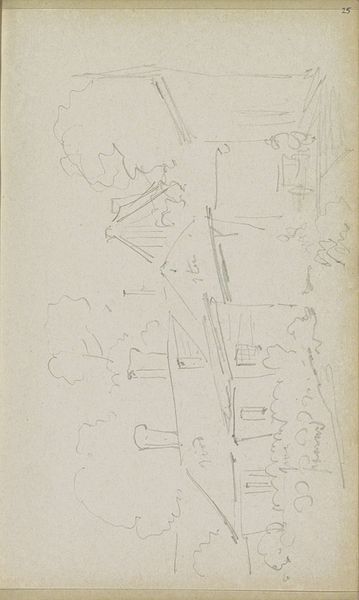
Copyright: Rijks Museum: Open Domain
Curator: Here we have Cornelis Vreedenburgh's "Straat met een man op een hooiwagen," dating roughly from 1890 to 1946. It's a pencil sketch on paper currently held in the Rijksmuseum. Editor: It's… suggestive, more than descriptive. There's a fragility to the light strokes that gives it an ephemeral feel, like a memory fading. Curator: The beauty here lies in its raw simplicity, its directness. Vreedenburgh chose the immediacy of pencil, a common and easily accessible material, to capture a fleeting moment. It speaks volumes about artistic intention, moving away from the labor-intensive practices to rapidly capturing a scene of everyday life. The quick strokes imply that the hay wain's labor is constant. Editor: Right, because when you look closely, you start to perceive the labor that underpins the seeming calm. Consider how landscape paintings often sanitized rural labor to create idyllic fantasies for urban elites, which hid all that backbreaking work that makes our society actually run. But Vreedenburgh gives it this understated… acknowledgement. Curator: Exactly, he renders the scene with accessible materials. I find that fascinating from a class perspective. Vreedenburgh seems concerned with the honest representation of labor through the easily handled pencil. There are also several impressions stacked up, showing perhaps his labor of practicing or different potential perspectives. Editor: Yes, and the setting. While we focus on this street and hay wagon, we should understand the implications of “street”. Streets serve as arteries for trade and interaction, yet also enforce segregations and economic disparity. Who occupies the street? How do they relate to the man driving the hay wagon? The composition itself points to layered power dynamics. Curator: We could analyze it through the lens of consumerism, noting how materials like the paper itself, the pencil, and even the hay became commodities within emerging market economies of the time. Consider how Vreedenburgh's simple tools reflect the burgeoning industrialization and its reach into daily existence. Editor: Indeed. His choice of such modest, easily reproduced medium, creates more questions than answers about artistic purpose and societal norms of the period. This quiet sketch carries surprising political echoes. Curator: A quiet meditation on everyday labor. Thank you. Editor: It’s a view into the quiet socio-economic currents running beneath the surface. I will reflect on it longer.
Comments
No comments
Be the first to comment and join the conversation on the ultimate creative platform.
